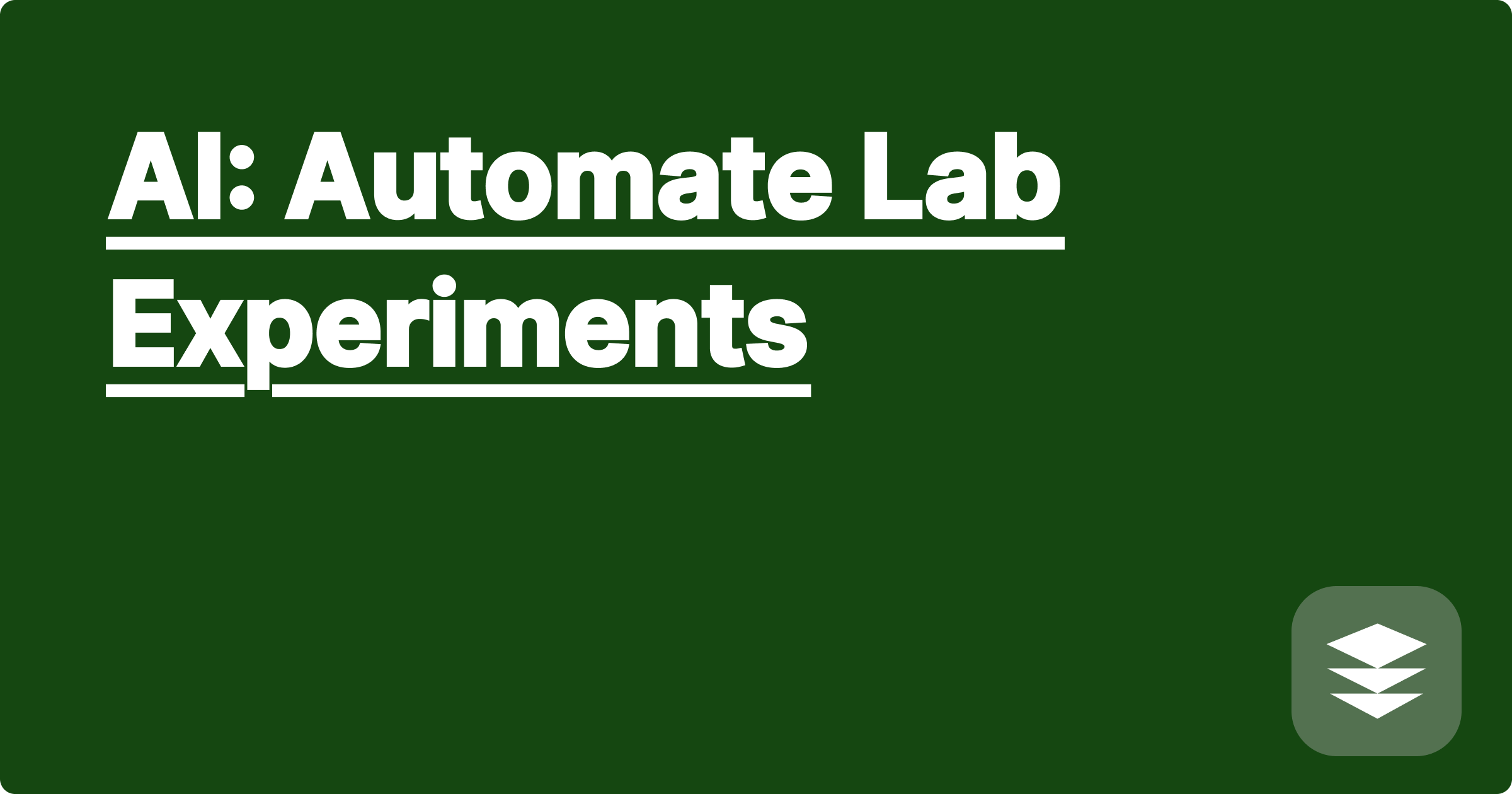
STEM fields often involve repetitive and time-consuming lab experiments. These experiments are crucial for gathering data, validating hypotheses, and advancing scientific knowledge. However, the manual nature of many lab procedures can hinder progress, limiting the scope and scale of research. Artificial intelligence offers a transformative solution by automating these tedious tasks, freeing up researchers to focus on higher-level analysis, interpretation, and innovation. This shift towards automated experimentation has the potential to revolutionize STEM education and research, accelerating discovery and broadening the horizons of scientific inquiry.
For STEM students and researchers, embracing AI-powered lab automation is no longer a luxury but a necessity. It represents a paradigm shift in how scientific research is conducted, offering significant advantages in terms of efficiency, accuracy, and reproducibility. By automating routine tasks, AI empowers researchers to handle larger datasets, explore more complex experimental designs, and ultimately, contribute more meaningfully to their respective fields. This transition also equips students with cutting-edge skills, preparing them for the future of scientific work in an increasingly AI-driven world.
Traditional lab experiments often involve a series of repetitive steps, such as sample preparation, data collection, and analysis. These manual processes are prone to human error, introducing variability and potentially compromising the reliability of results. Furthermore, the time-consuming nature of these tasks limits the number of experiments that can be conducted, restricting the exploration of different parameters and conditions. This bottleneck can significantly slow down the research process, delaying scientific breakthroughs and hindering the development of new technologies. The challenge lies in finding efficient and reliable methods to automate these repetitive procedures while maintaining the rigor and accuracy required for scientific validity. This problem is further compounded by the increasing complexity of modern experiments, which often involve multiple variables and intricate data analysis techniques.
AI tools like ChatGPT, Claude, and Wolfram Alpha offer powerful capabilities for automating various aspects of lab experiments. ChatGPT and Claude, for example, can be used to generate scripts for controlling lab equipment, analyze experimental data, and even suggest new experimental designs based on existing literature. Wolfram Alpha excels in performing complex calculations, symbolic manipulations, and data visualization, providing valuable insights into experimental results. These AI tools can be integrated with lab automation hardware, such as robotic arms and automated liquid handling systems, to create a fully automated experimental workflow. By leveraging the strengths of different AI platforms, researchers can build customized solutions tailored to their specific experimental needs.
First, define the specific experimental steps that need to be automated. This could include tasks like sample preparation, data acquisition, or analysis. Next, identify the appropriate AI tools for each step. For example, ChatGPT could be used to generate Python scripts for controlling a robotic arm, while Wolfram Alpha could be used to analyze the collected data. Then, integrate the chosen AI tools with the existing lab equipment. This might involve writing custom software interfaces or using pre-built integration platforms. After integration, thoroughly test the automated system to ensure its accuracy and reliability. This includes validating the results against manual experiments and troubleshooting any errors. Finally, document the entire automation process, including the AI tools used, the integration methods, and the validation procedures. This documentation will ensure reproducibility and facilitate future modifications.
Consider a chemistry experiment involving the synthesis of a new compound. Traditionally, this would require manual mixing of reagents, careful monitoring of reaction conditions, and tedious analysis of the final product. Using AI, the entire process can be automated. A robotic arm controlled by a script generated by ChatGPT could handle the precise mixing of reagents. Sensors integrated with Wolfram Alpha could monitor the reaction temperature and pH in real-time, adjusting parameters as needed. Finally, the composition of the final product could be analyzed automatically using spectroscopic techniques, with the data processed and interpreted by Wolfram Alpha. Another example involves analyzing large datasets from biological experiments. Instead of manually sifting through thousands of data points, AI algorithms can be trained to identify patterns, correlations, and anomalies, significantly accelerating the discovery process. For instance, image recognition algorithms can analyze microscopic images of cells, identifying specific features and classifying different cell types.
To effectively integrate AI into STEM education and research, it's crucial to develop a strong understanding of the underlying principles of AI and machine learning. This includes familiarizing yourself with different AI algorithms, their strengths, and limitations. Equally important is developing proficiency in programming languages like Python, which are essential for interacting with AI tools and automating experimental procedures. Furthermore, actively explore online resources and tutorials that offer practical guidance on using AI in specific STEM domains. Participating in workshops and conferences focused on AI in science can also provide valuable insights and networking opportunities. Finally, don't be afraid to experiment with different AI tools and approaches. The field of AI is constantly evolving, and staying up-to-date with the latest advancements is crucial for maximizing your academic success.
In conclusion, AI-powered lab automation represents a significant advancement in STEM research and education. By automating repetitive tasks, AI frees up researchers and students to focus on higher-level thinking, data interpretation, and innovation. Embracing these technologies is not just about improving efficiency; it's about transforming the way we conduct science, opening up new avenues for discovery and accelerating the pace of scientific progress. Start exploring the potential of AI in your own research or educational pursuits today. The future of STEM is automated, and the time to adapt is now.
AI for Chemistry: Ace Your Tests
AI Statistics Helper: Data Mastery
AI for CAD: Design Optimization
AI Essay Writer: STEM Research